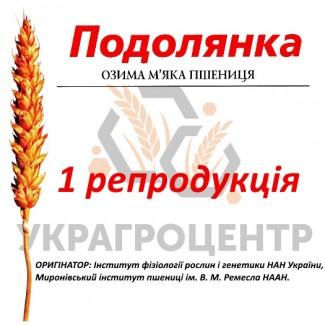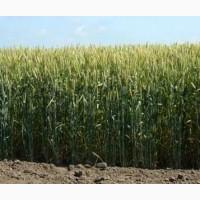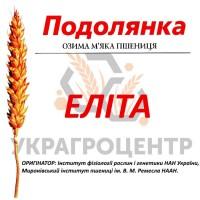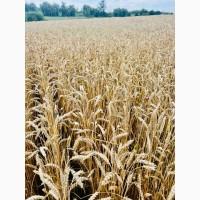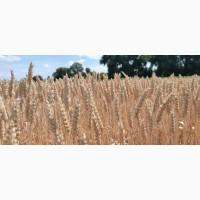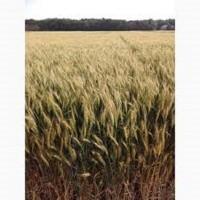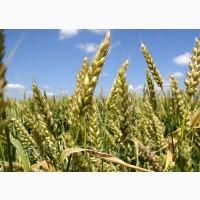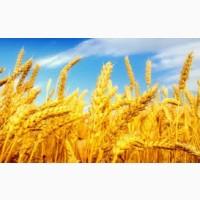For sale / buy
Winter wheat seeds PODOLYANKA 1 reproduction 2024, Poltava region.|| |126
Цена11,000 UAH. / ton
Region:all of Ukraine,
Poltava region.
(Chutove)
Updated:
Purpose of grain: Seed material
Quantity: 100 tons
PODOLANKA (bezosta)
winter soft wheat
ORIGINATOR: Institute of Plant Physiology and Genetics of the National Academy of Sciences of Ukraine, Myronovsky Wheat Institute named after V. M. Crafts of the National Academy of Sciences of Ukraine,
Entered into the register of plant varieties of Ukraine for 2003 for growing in the forest, forest-steppe and steppe zones of Ukraine under rain and irrigation.
BIOLOGICAL CHARACTERISTICS: medium-stemmed variety, intensive type, medium-ripe. It has high winter and drought resistance, resistance to grain sheddinggrains even at rest, medium resistance to lodging and damage by powdery mildew, brown leaf rust, root rot. A variety of lutescens.
GRAIN QUALITY: flour milling and baking properties are excellent.Grain Podolka contains 13.5-14.7% protein, 28.7-31.5% crude gluten, flour strength 320-410 a. e., the volume of bread from 100 g of flour is 1100-1210 ml, the overall assessment of the baking properties is 4.2-5.0 points. Referred to strong wheat. With proper agricultural techniques, the genetics of the variety ensure the production of high-quality grain.
ECONOMIC CHARACTERISTICS: the main feature of the variety is very high production reliability. The variety is maximally adapted to arid growing conditions, high-yielding, intensive type of use. Provides high and stable yields on different backgrounds of mineral nutrition. Unpretentious to growing conditions, predecessors and sowing dates, has high ecological plasticity. The Podolyanka variety, as less fussy about growing conditions, also has significant advantages over other varieties in terms of average and satisfactory predecessors and on average and poor agrobackgrounds. It is characterized by good regeneration ability, intensive start of regrowth and rapid growth of vegetative mass, endurance to spring colds, has a high bushy, thick-stemmed, suppresses weeds well.(//tractor-service.com)
According to the originator (IFRG of the National Academy of Sciences of Ukraine) in the years of the competitive test, the average yield of Podolyanka was 66.7 t/ha, which exceeded the yield of the national standard by 8.2 t/ha. According to the data of the Kirovohrad State Variety Testing Station, the yield of the variety according to two predecessors was 88.6 and 86.5 t/ha, which is 6.5-14.1 t/ha more than the national standard Albatros Odesa.
The grain yield in the State Variety Study in 52 variety tests was 60.0-96.0 t/ha. Substantial yield increases of the Podolyanka variety to the national standard - 5.0-19.3 t/ha were obtained in 57 variety tests, including increases of 10.0-19.3 t/ha - in 27 variety tests, 23 regions of Ukraine, covering the steppe, forest-steppe and Polesia zones (Donetsk, Odesa, Kirovohrad, Dnipropetrovsk, Kherson, Nikolaev, Zaporizhia, Luhansk, Vinnytsia, Poltava, Cherkassy) , Sumy, Volyn, Kharkov, Kiev, Zhytomyr, Chernihiv, Rivne, Ternopil, Lviv, Zakarpattia, Ivano-Frankivsk, Chernivtsi).
Maximum harvests of the variety 100.7; 102.2 and 113.7 t/ha were obtained in the production crops of OAO Shamraevskoe (the village of Ruda Skvyrskogo district, Kyiv region). High yields of the variety were obtained in the production crops of the Ternopil state expert center; Kyiv region (Glevakh village of Vasylkovsky district); 75.3 in the Kirovohrad region (the village of Novoselytsa, Ulyanovsk district) and in the conditions of Hungary (the city of Martonvashar), respectively; 82.8; 94.8 and 96.0 t/ha.
In 2003, against the background of the mass death of winter crops in Ukraine, Podolyanka produced a record yield of 78.0 t/ha on an area of 80 ha and 66.5 t/ha on an area of 560 ha (SSG Pyatidna Vladimir-Volynskogo District, Volyn Region). A high yield of 70.3 t/ha was obtained in the Czech Republic, which exceeded the partially frozen local standard by 27.0 t/ha. In the village In Novoselitsa, Ulyanovsk District, Kirovohrad Region, all production crops of 10 varieties died, only Podolyanka survived.
In 2004, high yields of the variety were obtained in LLC NPO Zhemchuzhina Podolya, Khmelnytskyi region - 97.5 and 93.0 t/ha; OJSC Shamraevskoe (village of Ruda Skvyrsky district, Kyiv region) - 96.0 t/ha; in the tests of the Center for Grading and Grading (Kyiv Region) - 90.5 and 88.6 t/ha; NIC Yuzhny of the Kirovohrad Region 85.4 and 96.0 t/ha; Ternopil State Expert Center 82.4 t/ha and in the Czech Republic 99.4 t/ha.
In recent years, the yield of the variety in the experimental farm of the Institute was 75.2-109.0 t/ha.
AGROTECHNICAL REQUIREMENTS: the variety must be grown using intensive technology with the introduction of optimal doses ofmineral fertilizers. On high levels of mineral nutrition, retardants should be applied to prevent lodging. To ensure high grain yields, it is also necessary to protect plants from pests and diseases, especially after disposal
winter soft wheat
ORIGINATOR: Institute of Plant Physiology and Genetics of the National Academy of Sciences of Ukraine, Myronovsky Wheat Institute named after V. M. Crafts of the National Academy of Sciences of Ukraine,
Entered into the register of plant varieties of Ukraine for 2003 for growing in the forest, forest-steppe and steppe zones of Ukraine under rain and irrigation.
BIOLOGICAL CHARACTERISTICS: medium-stemmed variety, intensive type, medium-ripe. It has high winter and drought resistance, resistance to grain sheddinggrains even at rest, medium resistance to lodging and damage by powdery mildew, brown leaf rust, root rot. A variety of lutescens.
GRAIN QUALITY: flour milling and baking properties are excellent.Grain Podolka contains 13.5-14.7% protein, 28.7-31.5% crude gluten, flour strength 320-410 a. e., the volume of bread from 100 g of flour is 1100-1210 ml, the overall assessment of the baking properties is 4.2-5.0 points. Referred to strong wheat. With proper agricultural techniques, the genetics of the variety ensure the production of high-quality grain.
ECONOMIC CHARACTERISTICS: the main feature of the variety is very high production reliability. The variety is maximally adapted to arid growing conditions, high-yielding, intensive type of use. Provides high and stable yields on different backgrounds of mineral nutrition. Unpretentious to growing conditions, predecessors and sowing dates, has high ecological plasticity. The Podolyanka variety, as less fussy about growing conditions, also has significant advantages over other varieties in terms of average and satisfactory predecessors and on average and poor agrobackgrounds. It is characterized by good regeneration ability, intensive start of regrowth and rapid growth of vegetative mass, endurance to spring colds, has a high bushy, thick-stemmed, suppresses weeds well.(//tractor-service.com)
According to the originator (IFRG of the National Academy of Sciences of Ukraine) in the years of the competitive test, the average yield of Podolyanka was 66.7 t/ha, which exceeded the yield of the national standard by 8.2 t/ha. According to the data of the Kirovohrad State Variety Testing Station, the yield of the variety according to two predecessors was 88.6 and 86.5 t/ha, which is 6.5-14.1 t/ha more than the national standard Albatros Odesa.
The grain yield in the State Variety Study in 52 variety tests was 60.0-96.0 t/ha. Substantial yield increases of the Podolyanka variety to the national standard - 5.0-19.3 t/ha were obtained in 57 variety tests, including increases of 10.0-19.3 t/ha - in 27 variety tests, 23 regions of Ukraine, covering the steppe, forest-steppe and Polesia zones (Donetsk, Odesa, Kirovohrad, Dnipropetrovsk, Kherson, Nikolaev, Zaporizhia, Luhansk, Vinnytsia, Poltava, Cherkassy) , Sumy, Volyn, Kharkov, Kiev, Zhytomyr, Chernihiv, Rivne, Ternopil, Lviv, Zakarpattia, Ivano-Frankivsk, Chernivtsi).
Maximum harvests of the variety 100.7; 102.2 and 113.7 t/ha were obtained in the production crops of OAO Shamraevskoe (the village of Ruda Skvyrskogo district, Kyiv region). High yields of the variety were obtained in the production crops of the Ternopil state expert center; Kyiv region (Glevakh village of Vasylkovsky district); 75.3 in the Kirovohrad region (the village of Novoselytsa, Ulyanovsk district) and in the conditions of Hungary (the city of Martonvashar), respectively; 82.8; 94.8 and 96.0 t/ha.
In 2003, against the background of the mass death of winter crops in Ukraine, Podolyanka produced a record yield of 78.0 t/ha on an area of 80 ha and 66.5 t/ha on an area of 560 ha (SSG Pyatidna Vladimir-Volynskogo District, Volyn Region). A high yield of 70.3 t/ha was obtained in the Czech Republic, which exceeded the partially frozen local standard by 27.0 t/ha. In the village In Novoselitsa, Ulyanovsk District, Kirovohrad Region, all production crops of 10 varieties died, only Podolyanka survived.
In 2004, high yields of the variety were obtained in LLC NPO Zhemchuzhina Podolya, Khmelnytskyi region - 97.5 and 93.0 t/ha; OJSC Shamraevskoe (village of Ruda Skvyrsky district, Kyiv region) - 96.0 t/ha; in the tests of the Center for Grading and Grading (Kyiv Region) - 90.5 and 88.6 t/ha; NIC Yuzhny of the Kirovohrad Region 85.4 and 96.0 t/ha; Ternopil State Expert Center 82.4 t/ha and in the Czech Republic 99.4 t/ha.
In recent years, the yield of the variety in the experimental farm of the Institute was 75.2-109.0 t/ha.
AGROTECHNICAL REQUIREMENTS: the variety must be grown using intensive technology with the introduction of optimal doses ofmineral fertilizers. On high levels of mineral nutrition, retardants should be applied to prevent lodging. To ensure high grain yields, it is also necessary to protect plants from pests and diseases, especially after disposal
|
Author, contacts | |
Ihor / отзывы, инфо. / | ||185оценка активности | |
|
Phone:
(050xxxxxx
show
| |
ID объявления: #1202734
(added by a registered user, registration date: 07-21-2022)
Added / Updated: 09-17-2024 10:27 (relevant, until: 09-17-2025)
Permanent ad address:
Showed / watched for today: ?, total: ?
Similar ads
Among them there are many interesting...
